Layout of a 4x6 bath with separate sink and steam room
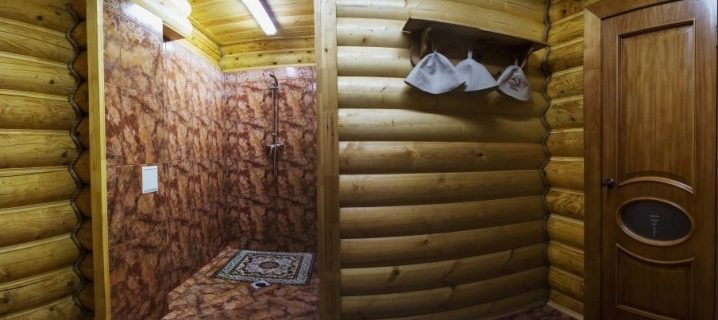
The Russian bath is not only a wellness procedure, but also a good tradition of joint relaxation with family or friends. It is difficult to imagine a country house without a bath. It is highly honorable to build it yourself on your site. Let's dwell on the layout of 4x6 m with a separate sink and a steam room.
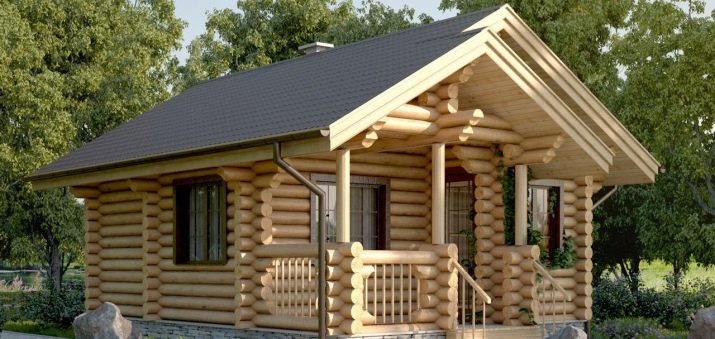
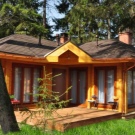
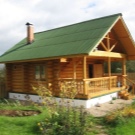
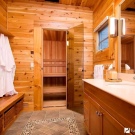
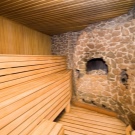
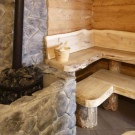
Peculiarities
The optimal size of the bath on the land plot is 4x6 m. This volume of the room allows you to equip a place for rest, so that several people can steam at the same time. The layout of the bath must include a dressing room, a steam room and a washing room. It is preferable to divide the bath with partitions into three rooms so that they are effectively heated and retain heat.
Separate steam room and shower room separate wet and dry steam rooms. You can also make a recreation room separate from the vestibule, put it in a washing shower cabin: make a traditional bathhouse comfortable in a modern way.
In addition to the internal premises, it is necessary to include in the project a ventilation duct and sewer channels, hot and cold water supply systems, the ability to use electricity, and take into account fire safety standards.
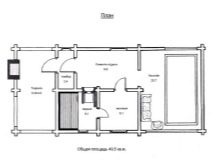

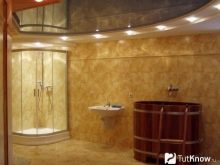
Projects
Before drawing up a plan, you need to choose the right site and soil for construction. For fire safety purposes, it is undesirable to attach a bath room directly to the house. For construction and finishing work, you should choose materials that are resistant to high temperatures. Building a separate bath is quite costly, but comfortable and safe.
To select a reliable area on the site, it is worth conducting a geological survey and proceeding from this data when drawing up drawings and laying the foundation.
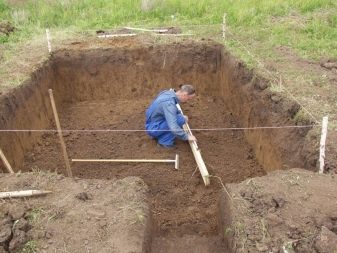

Let's note the main nuances when choosing a place:
- The most convenient place on a hill: so dirty water will leave the bath by gravity.
- Wet areas with possible groundwater are best avoided immediately.
- The distance to the well or the nearest body of water must be at least 5m.
- The nearest residential building should not be closer than 8 m.
- The bathhouse should be located as far as possible from the toilet (if it is outside) and compost.
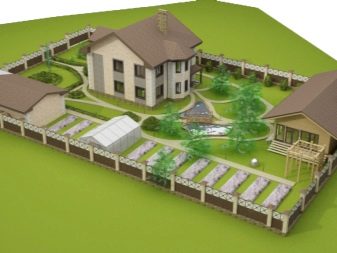

The type of soil determines the design of the bath foundation. Most often, foundations with a small deepening are used: strip (in areas with sandy soil) and columnar type. Before construction, you need to free the site by digging it up from bushes, roots, small stones.
As a rule, a 6x4 m bathhouse does not require a deep foundation. But in each case, it is necessary to take into account the soil, groundwater and the percentage of soil freezing.

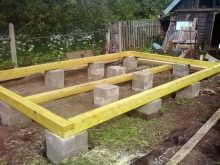
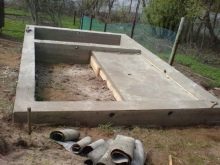
Room size standards
The dimensions of the bath windows can be 40x60 or 70x80 cm, the window in the washing room should be placed higher. The front door should be made small and low so that the heat does not go outside. Internal doors are best positioned perpendicular to avoid drafts and colds (close to each other). Ceiling height standards vary minimally: from 2.1 to 2.4 m. The volume of premises can be planned in different ways, it all depends on the needs of the owners and the number of rooms.
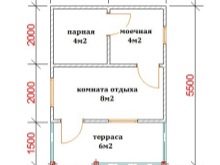
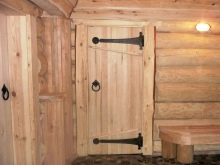
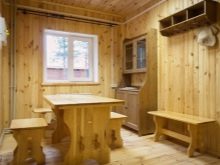
Steam room
Do not make it too narrow so that the bath does not overheat quickly. It is not difficult to calculate the minimum size based on the number of people who can steam at the same time: 1 m - sitting place, 2.2 - recumbent.Number of seats + space for the stove + a small passage to the shelves. The distance from the oven to the shelves should be at least 20-30 cm. The upper tier should be at least 115 cm from the ceiling.
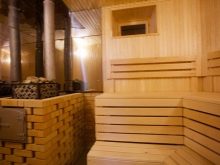
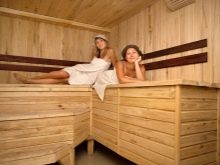
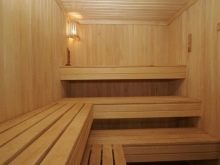
Washing
The optimal volume of the washroom is 1.5x1.5 m.If you allocate a little more space for it, there will be enough space for a shower cabin of 1.2x1.2 m and trestle beds.
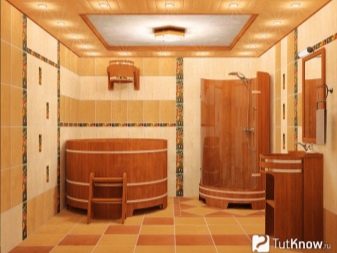
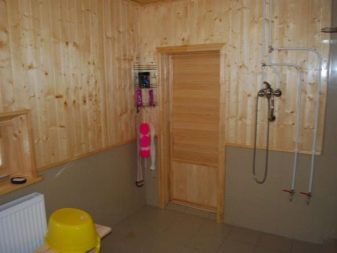
Restroom
The ratio of volumes of warm and cool rooms varies at the request of the owners. The option with a spacious steam room, shower and a small dressing room is possible, or with the most spacious relaxation room and a separate dressing room.
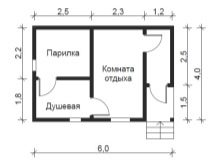


Walls
A significant area of the bath is occupied by walls and piers. Therefore, the dimensions of the premises will have to be calculated carefully and several times. In practice, the interior space remains much less, if you do not take into account the thickness of all partitions and cushioning materials in the drawing.
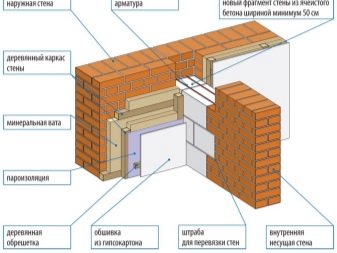
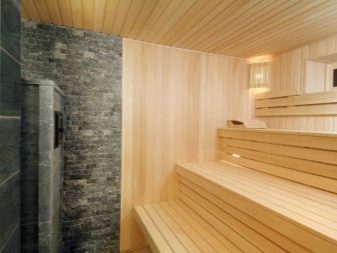
Oven selection and location
The heating of each room depends on the type and power of the stove. Therefore, it is important to choose a suitable stove for the desired volume of premises (especially a steam room). The best materials for a sauna stove are brick or metal. A brick oven heats up more slowly, cools down longer, so it takes less fuel. However, it is not easy to fold such a structure; a master stove-maker should do this.

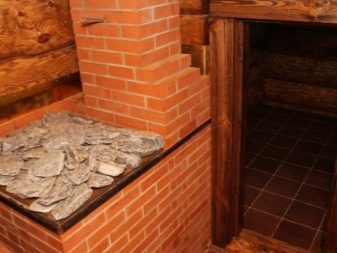
The metal oven is easy to make yourself. Enough basic skills in working with a grinder and a welding machine. It is better suited for a sauna with a small steam room. Stoves are divided into electric and wood-burning (you can heat coal, fuel oil or gas). Wood stoves are authentic, but electric stoves are easier to install and maintain.
The most economical option for a sauna with a separate sink and a steam room is a sauna heater.
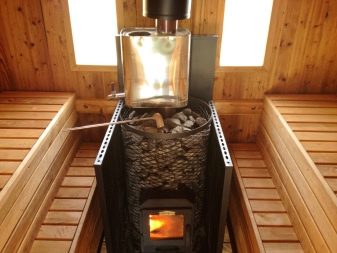
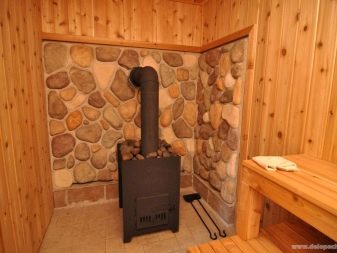
If the bath does not provide for other heating, except for the stove, it must be installed so that it heats several rooms at once. The universal layout of the stove is with a door towards the dressing room. Then there will be a heater inside the steam room, and a container with water in the washing room.
This is the most convenient option in operation: the firebox is located in the center of the bath and heats up all the rooms:
- The highest temperature should be in the steam room.
- Slightly lower - in a ventilated washing room (in a humid and hot room it is more difficult to breathe, which can be dangerous for people with heart and lung diseases).
- Moderate warming up in a cool dressing room.
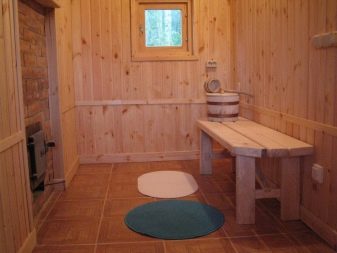

In addition to the location and dimensions of the premises, it is worth considering the internal work in advance. For example, how and how tightly to insulate the walls. The thinner the material, the more internal insulation it requires. A log bath must be laid during construction; for a log building, inter-row insulation is sufficient. In a brick bath, you should definitely fill the space between the walls of the masonry; outside you can insulate with plates or foam.
In no case should the foam be used indoors: it becomes toxic when heated.
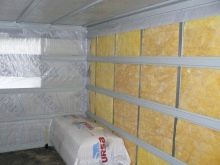

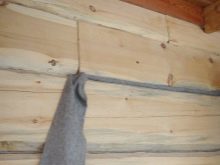
Floor insulation is of great importance. Wooden logs or concrete floor slabs are used as the basis for flooring in the bath. The flooring itself is made of expanded clay, expanded polystyrene, foamed polymers or glass wool.
The distance from the stove to the walls and shelves is important, which depends on the type of stove and the dimensions of the premises.
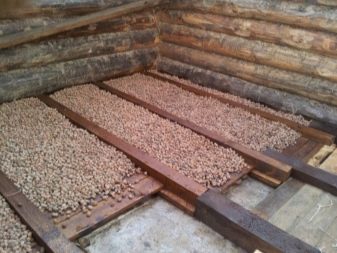

The chimney can be indoor or outdoor. In the Russian bath, internal structures are more popular, which do not violate the architectural appearance of the building. You can assemble it from metal, ceramic or brick pipes. Heat-insulating material is applied at the junction of the pipe and the ceiling, and an anti-storm protection is installed above the chimney. An insulating plug is placed on the roof.
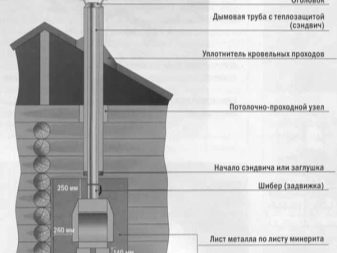
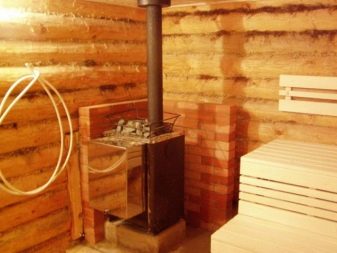
Interior decoration can be different depending on the needs and tastes of the owners. It helps maintain temperature and prevents burns. The main thing is that the materials are hygienic and heat-resistant. For a steam room, it is better to give preference to deciduous wood species.They do not emit resin; conifers are well suited for washing and dressing rooms. Loungers in the steam room, shower and trestle beds in the washing room are installed based on the calculation of the volume of the premises. Electricity, ventilation and sewerage are supplied to the premises at the end of the construction.

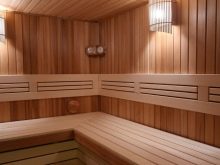
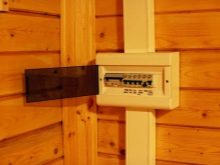
Materials (edit)
Before drawing up a project for a future bath, it is necessary to decide on the materials for construction. Basic requirements for materials: environmental friendliness, resistance to weather conditions and temperature extremes. The best choice for a bath is brick or more traditional wood. The choice also depends on the climate of the area and soil.
It is cheaper to buy material in bulk, after asking about the quality and origin of the wood. Before starting construction, all materials must be dried in the sun. Their moisture content should not exceed 8%.
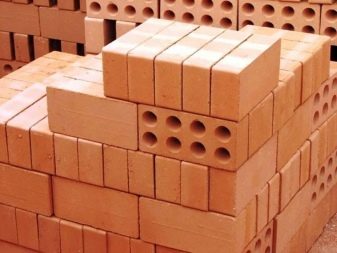

A wooden bath can be assembled from a ready-made frame, built from logs or beams. The log bath does not require additional insulation. The construction of beams must be laid with linen after each row so that the structure is airtight. A wooden roof can be covered with a corrugated sheet or metal shingles.


Brick baths are less common, but more durable and do not require constant maintenance. The cost of wooden and brick baths is about the same. For the construction of walls, red or clay bricks are better suited, for laying stoves and interior decoration - fireclay. Wooden materials are preferred for windows and doors. They are the most reliable and durable.
Another significant advantage of wood is environmental friendliness. When heated for a long time, it does not emit toxic substances, unlike PVC windows.
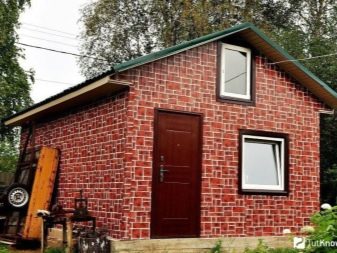
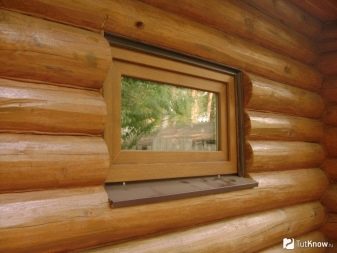
Internal organization
With the same dimensions (4x6 or 6x4 m), you can plan the location of partitions, windows and doors in different ways. Before dividing the building with partitions, they think over the location of windows and doors. A universal option is the entrance door in the southern wall (in the south, snow melts first and fewer drifts). The windows of cold rooms face the west, because the bath is more often used in the afternoon, and the sun hits the windows from the west.

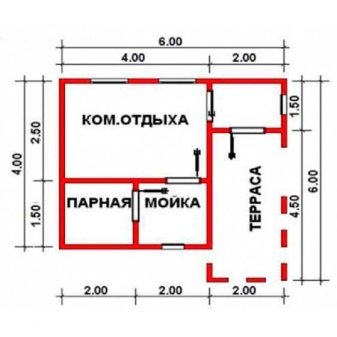
It is better to separate the tambour and the rest room. This will help avoid drafts. The rest room, where you can undress, relax and chat after taking water procedures, can occupy up to half of the entire area of the bath. Comfortable benches, chairs or stools are placed here. You can even put upholstered furniture in the dressing room, but you need to choose it very carefully, giving preference to material that is resistant to temperature extremes. A sauna stove with a fireplace module is well suited for a spacious restroom.
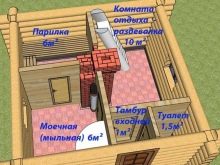

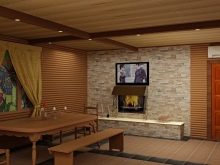
If the bath will be used by a family with children, it is worth cutting back the space for the rest room and allocating more space for the washing room so that you can use it for showering and washing. You can also fence a small room for a bathroom.
One of the most pleasant possibilities for a 6x4 m sauna is to add an open terrace or veranda. As a rule, it is attached to the western wall (when entering from the south) and exits from the rest room.
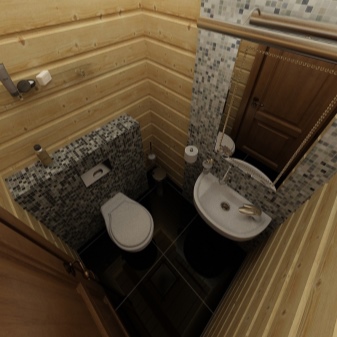
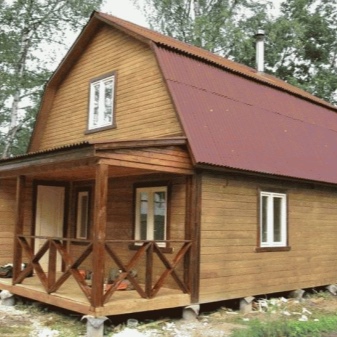
It is good to admire the summer sunset on the terrace. Lovers of a real Russian bath come out to freshen up in the winter after the steam room. The construction of a veranda is somewhat more difficult, since it needs to be glazed. But this will be the best solution for those who often catch colds or do not like the cold.
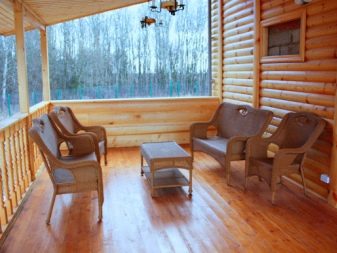
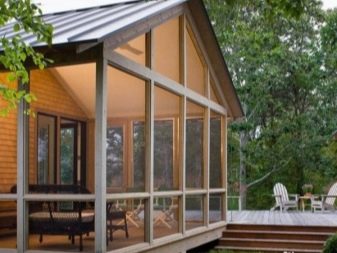
Beautiful examples
We offer several beautiful examples that will clearly demonstrate the subtleties of the layout of a 4x6 m bath.
- The universal scheme of the bath 4 by 6 m - shower room 2x2 m, steam room 2x2 m, from the street entrance to the dressing room 2.5x1.2 m.From the dressing room you can go to the rest room 2.5 x 3.8 m, on the left is the door to the shower room, on the right - to the attached terrace 1.5x4 m.
- Layout option with a narrow rest room: dressing room 1.5x4 m with doors to the right to the room 4x2 m and to the washing room 2.5x2 m.A steam room of the same volume is located in the farthest corner from the front door, it is entered through the sink.
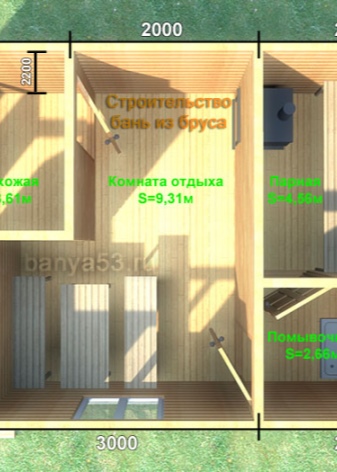
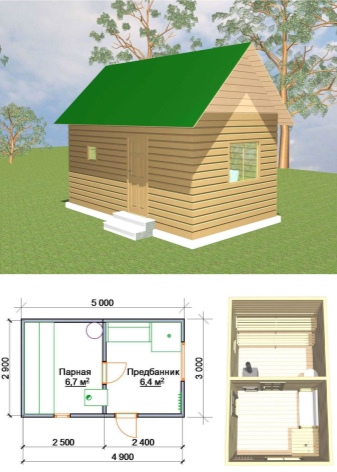
- Outside, the bathhouse may look like this.
- You can independently create just such a bath from logs.

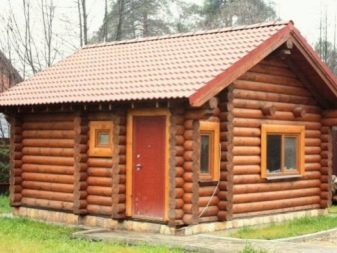
For an overview of the steam room and sink in the bath, see the next video.




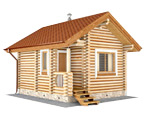
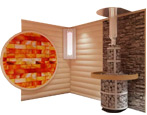
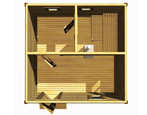
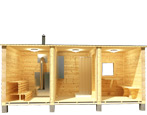
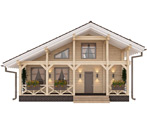
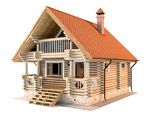


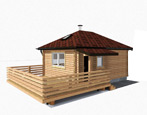
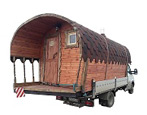


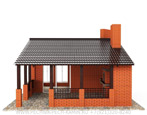

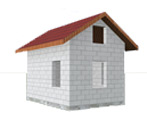

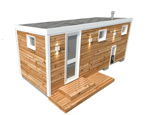
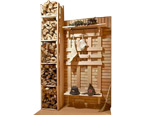
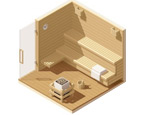
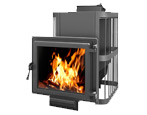
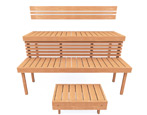


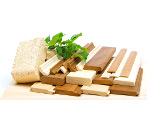


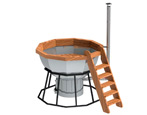
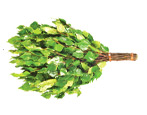
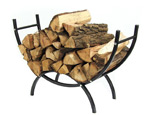
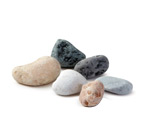
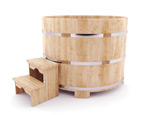
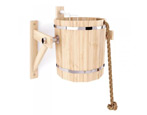
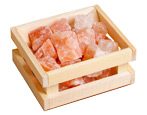

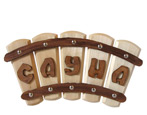
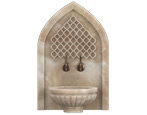

























































The comment was sent successfully.